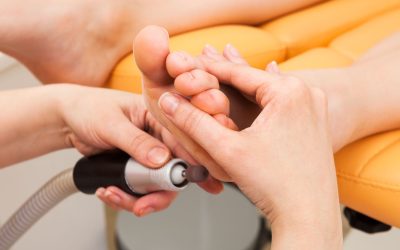Carpal Tunnel Syndrome (CTS) is one of the most common workplace injuries, especially in professions that require repetitive hand movements like typing, data entry, and assembly line work. The symptoms—such as tingling, numbness, and pain in the wrist and hand—can severely impact productivity and quality of life. Many workers turn to traditional treatments like wrist splints, medications, or even surgery, but there is an effective, non-invasive alternative: chiropractic adjustments.
At Dr. Palmes Chiropractic, we help workers prevent and manage Carpal Tunnel Syndrome through targeted chiropractic care. In this blog, we’ll explore how chiropractic adjustments can address the root causes of CTS and how you can avoid or alleviate wrist and hand pain without surgery or drugs.
What Is Carpal Tunnel Syndrome?
Carpal Tunnel Syndrome occurs when the median nerve, which runs from the forearm into the palm of the hand, becomes compressed or irritated. This nerve travels through the carpal tunnel in the wrist—a narrow passageway made up of bones and ligaments.
When the median nerve is pressed, it can cause:
- Pain or tingling in the hand, wrist, or fingers
- Numbness, especially in the thumb, index, and middle fingers
- Weakness or difficulty gripping objects
- Pain that worsens at night
In the workplace, CTS often develops due to repetitive movements (e.g., typing, using a mouse, or assembly work) that put pressure on the wrist and forearm, leading to nerve compression. This repetitive strain can gradually worsen if not addressed early.
How Chiropractic Adjustments Can Help Carpal Tunnel Syndrome
While traditional treatments focus on symptom management, chiropractic adjustments focus on correcting the underlying issue—the misalignments and imbalances that cause pressure on the median nerve. By restoring proper function and alignment, chiropractic care can relieve the strain on the wrist, hand, and forearm, allowing for better nerve function and pain relief.
1. Spinal Adjustments and Nerve Health
The spine plays a key role in nerve function. Misalignments (called subluxations) in the neck and upper back can impact nerve communication, contributing to pain, numbness, and tingling in the hands. Chiropractic adjustments can restore spinal alignment, ensuring that nerves are functioning properly and reducing the risk of Carpal Tunnel Syndrome.
2. Wrist and Forearm Adjustments
While spinal alignment is crucial, manual adjustments to the wrist and forearm can also help. Chiropractors use gentle manipulations to restore motion and reduce tension in the carpal tunnel, releasing pressure from the median nerve. By increasing the range of motion in the wrist and hand, adjustments can alleviate symptoms and improve overall functionality.
3. Soft Tissue Therapy
Many workers suffering from CTS have tight muscles or tendons in the forearm and wrist, which can exacerbate nerve compression. Chiropractors often incorporate soft tissue therapy into treatment plans. Techniques such as myofascial release or trigger point therapy can relax tight muscles and release tension, improving blood circulation and relieving the stress placed on the carpal tunnel.
Preventing Carpal Tunnel Syndrome in the Workplace
While chiropractic adjustments can be effective for treating Carpal Tunnel Syndrome, prevention is key. By making small adjustments to your work environment and daily habits, you can significantly reduce the risk of developing CTS in the first place.
1. Ergonomic Workstations
One of the leading causes of CTS in the workplace is poor ergonomics. If your workstation is set up incorrectly, it can cause unnecessary strain on your hands, wrists, and arms. Here are a few ergonomic adjustments to consider:
- Keep your wrists straight while typing or using a mouse
- Use a split keyboard or an ergonomic keyboard to reduce wrist strain
- Position your monitor at eye level to avoid leaning forward and straining your neck and shoulders
- Adjust your chair so that your arms are at a comfortable angle, with your elbows close to your body at 90 degrees
2. Regular Breaks and Stretching
Frequent breaks and stretching are essential to prevent repetitive strain injuries. If your job requires repetitive motions, take short breaks every 20–30 minutes to stretch and rest your hands and wrists. Simple stretches such as wrist flexor and extensor stretches can improve flexibility and reduce muscle tension in the forearms and hands.
3. Strengthening Exercises
Building strength in the forearms, wrists, and hands can prevent strain and reduce the risk of CTS. Focus on strengthening exercises that target the muscles of the forearm, wrist, and hand. For example:
- Wrist curls (with light weights)
- Grip strengthening exercises
- Forearm stretches
Strengthening these muscles helps maintain proper alignment and improves your body’s ability to handle repetitive motions.
When to See a Chiropractor for Carpal Tunnel Syndrome
If you’re experiencing symptoms of Carpal Tunnel Syndrome, it’s important to address them early. The earlier you seek treatment, the more effective chiropractic care can be in alleviating pain and restoring function.
You should see a chiropractor if you:
- Experience tingling, numbness, or pain in your hands or wrists
- Notice weakness or difficulty gripping objects
- Have discomfort that worsens at night
- Have been doing repetitive tasks that strain your wrists
A chiropractor can assess your condition, offer personalized treatment, and help you develop strategies to reduce strain at work and at home.
Conclusion: Take Control of Your Health with Chiropractic Care
Carpal Tunnel Syndrome doesn’t have to take over your life or your workday. Chiropractic adjustments, along with ergonomic changes and preventive care, can help you manage or even prevent this common condition. By addressing the root cause—rather than just masking symptoms—you can experience long-lasting relief from Carpal Tunnel Syndrome without resorting to surgery or medication.
At Dr. Palmes Chiropractic, we specialize in treating Carpal Tunnel Syndrome through gentle, non-invasive chiropractic techniques. If you’re struggling with wrist pain, tingling, or numbness, we’re here to help.
Say Goodbye to Carpal Tunnel Pain
If Carpal Tunnel Syndrome is affecting your work or daily life, chiropractic care can help you find relief. Contact Dr. Palmes Chiropractic today to schedule an appointment with the best chiropractor for back pain in San Diego. Together, we’ll create a personalized treatment plan to help you get back to feeling your best—without surgery or medication.


